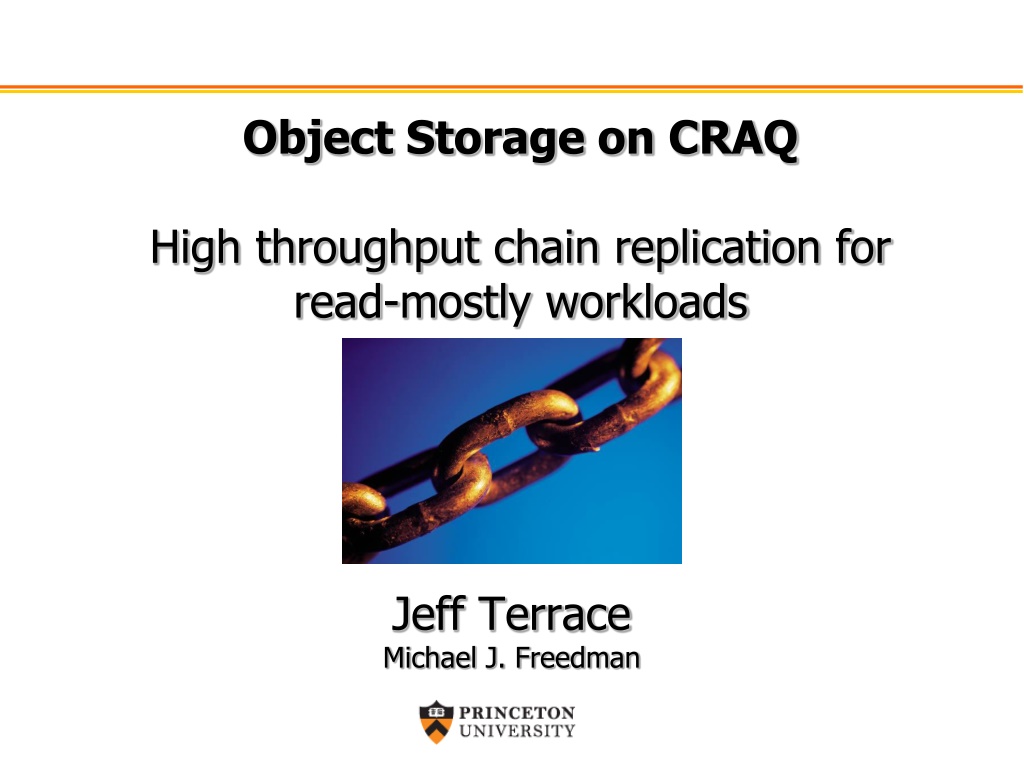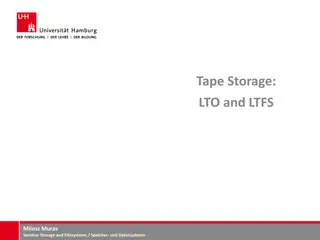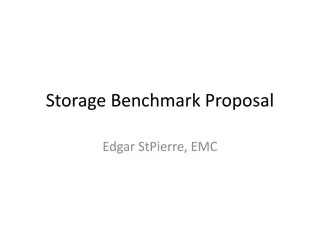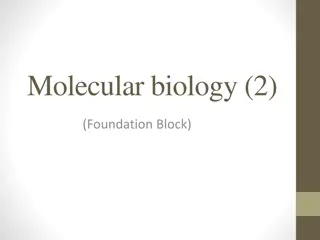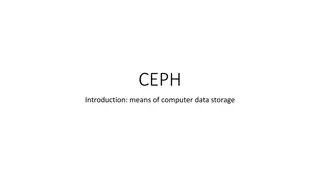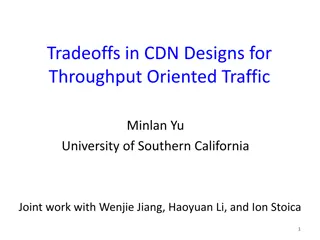Understanding Chain Replication for High Throughput Object Storage
Chain replication is a technique used to achieve high throughput and scalability in object storage systems. It ensures strong consistency by maintaining replicas of data across a chain of nodes, enabling efficient read-mostly workloads. The approach simplifies programming complexity and enhances system scalability, making it an ideal solution for modern data storage requirements.
Download Presentation

Please find below an Image/Link to download the presentation.
The content on the website is provided AS IS for your information and personal use only. It may not be sold, licensed, or shared on other websites without obtaining consent from the author. Download presentation by click this link. If you encounter any issues during the download, it is possible that the publisher has removed the file from their server.
E N D
Presentation Transcript
Object Storage on CRAQ High throughput chain replication for read-mostly workloads Jeff Terrace Michael J. Freedman
Data Storage Revolution Relational Databases Object Storage (put/get) Dynamo PNUTS CouchDB MemcacheDB Cassandra Speed Scalability Availability Throughput No Complexity
Eventual Consistency Read Request Write Request Replica Replica A Manager Replica Replica B Read Request
Eventual Consistency Writes ordered after commit Reads can be out-of-order or stale Easy to scale, high throughput Difficult application programming model
Traditional Solution to Consistency Two-Phase Commit: 1. Prepare 2. Vote: Yes 3. Commit 4. Ack Replica Write Request Replica Manager Replica Replica
Strong Consistency Reads and Writes strictly ordered Easy programming Expensive implementation Doesn t scale well
Our Goal Easy programming Easy to scale, high throughput
Chain Replication van Renesse & Schneider (OSDI 2004) W1 R1 W2 R2 R3 W1 R1 R2 W2 R3 Replica Write Request Read Request Replica Manager HEAD TAIL Replica Replica
Chain Replication Strong consistency Simple replication Increases write throughput Low read throughput Can we increase throughput? Insight: Most applications are read-heavy (100:1)
CRAQ Two states per object clean and dirty Read Request Read Request Read Request Read Request Read Request HEAD Replica Replica Replica TAIL V1 V1 V1 V1 V1
CRAQ Two states per object clean and dirty If latest version is clean, return value If dirty, contact tail for latest version number Read Request Read Request Write Request 1 2 V1 V2 V1 HEAD Replica Replica Replica TAIL ,V2 V1 V2 ,V2 V1 V2 ,V2 V1 V2 ,V2 V1 V2 V1 V2
Multicast Optimizations Each chain forms group Tail multicasts ACKs HEAD Replica Replica Replica TAIL V1 V2 ,V2 V1 V2 ,V2 V1 V2 ,V2 V1 V2 ,V2 V2
Multicast Optimizations Each chain forms group Tail multicasts ACKs Head multicasts write data Write Request HEAD Replica Replica Replica TAIL V2 ,V3 V2 ,V3 V2 ,V3 V2 ,V3 V2,V3 V3
CRAQ Benefits From Chain Replication Strong consistency Simple replication Increases write throughput Additional Contributions Read throughput scales : Chain Replication with Apportioned Queries Supports Eventual Consistency
High Diversity Many data storage systems assume locality Well connected, low latency Real large applications are geo-replicated To provide low latency Fault tolerance (source: Data Center Knowledge)
Multi-Datacenter CRAQ DC1 HEAD TAIL DC3 Replica Replica TAIL Replica Replica Replica Replica Replica DC2
Multi-Datacenter CRAQ DC1 HEAD TAIL DC3 Replica Replica Client Replica Replica Client Replica Replica Replica DC2
Chain Configuration Motivation Solution 1. Specify chain size 1. Popular vs. scarce objects 2. List datacenters dc1, dc2, dcN 2. Subset relevance 3. Separate sizes dc1, chain_size1, 3. Datacenter diversity 4. Specify master 4. Write locality
Master Datacenter DC1 Writer HEAD TAIL Replica Replica TAIL Replica Replica DC3 Replic a Replica HEAD Replica DC2
Implementation Approximately 3,000 lines of C++ Uses Tame extensions to SFS asynchronous I/O and RPC libraries Network operations use Sun RPC interfaces Uses Yahoo s ZooKeeper for coordination
Coordination Using ZooKeeper Stores chain metadata Monitors/notifies about node membership DC2 DC1 CRAQ CRAQ CRAQ CRAQ ZooKeeper CRAQ ZooKeeper CRAQ ZooKeeper DC3 CRAQ CRAQ CRAQ
Evaluation Does CRAQ scale vs. CR? How does write rate impact performance? Can CRAQ recover from failures? How does WAN effect CRAQ? Tests use Emulab network emulation testbed
Read Throughput as Writes Increase 7x- 3x- 1x-
Failure Recovery (Latency) Time (s) Time (s)
If Single Object Put/Get Insufficient Test-and-Set, Append, Increment Trivial to implement Head alone can evaluate Multiple object transaction in same chain Can still be performed easily Head alone can evaluate Multiple chains An agreement protocol (2PC) can be used Only heads of chains need to participate Although degrades performance (use carefully!)
Summary CRAQ Contributions? Challenges trade-off of consistency vs. throughput Provides strong consistency Throughput scales linearly for read-mostly Support for wide-area deployments of chains Provides atomic operations and transactions Thank You Questions?
